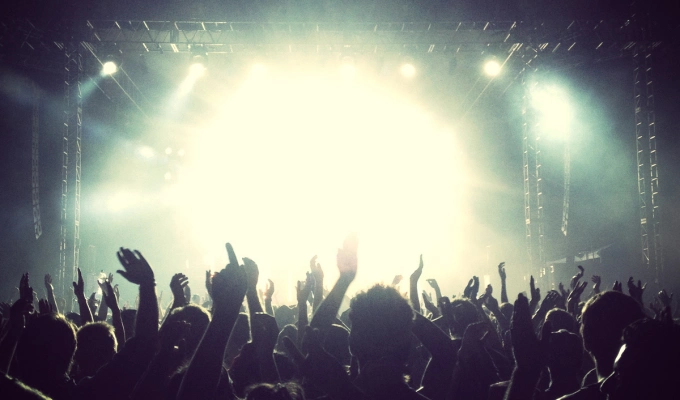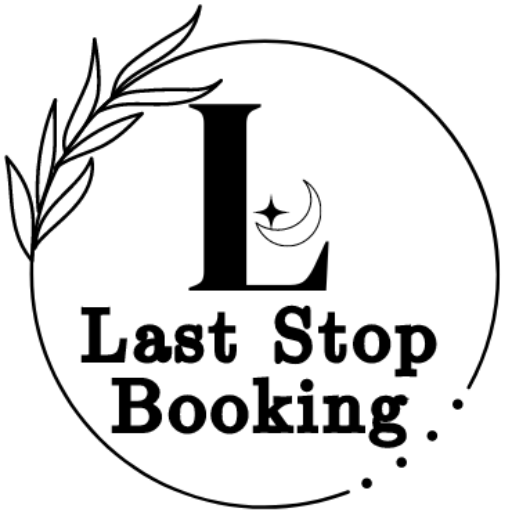
When you are on stage, your main goal isn’t to play a good set, to sell records, to overcome nervousness, or to impress someone in the industry. Your main goal should be entertaining the crowd.
You can entertain a crowd in a number of ways:
- Performing well
- Adding creativity and spontaneity to the show
- Interacting with the audience
- Creating memorable moments
- Giving your show dynamics
- Controlling momentum and pacing
- Adding crowd pleasers
- Having a distinct personality on stage
- Reducing downtime between songs
Often times, there should be a distinct amount of confidence and charisma, especially from the lead singer. All members of the band should be comfortable with maintaining eye contact (as opposed to only looking down at their instruments), moving around on stage, and giving attention to multiple sections of the audience.
Here are some tips on how to improve your ability to work a crowd:
- Practice: Plan specific moments in the set to talk to the crowd. Everyone in the band should know exactly when the pauses will be so they aren’t starting the next song or fiddling with their instruments. Tuning breaks should be scheduled in the set (unless it’s necessary) so that they occur when someone is doing the talking. You should also plan out specific talking material – short stories, song introductions, jokes, merch announcements, etc. so that you have a good feel for the timing and delivery. Stage banter isn’t necessary – people came to see you play, not lecture, so keep it limited. Also, practice speaking into a microphone. Enunciate. It’s annoying when people talk into a mic but can’t be understood.
- Dynamics: Create a song where songs can flow into each other – both in terms of their key as well as their tempo. Provide reprieve at appropriate moments by finding songs to change up the volume, mood, and tempo – don’t keep the same feeling the entire set. Giving your overall set dynamics can make the bigger, energetic moments or the ballads more powerful.
- One Voice: Limit the number of people addressing the crowd (try to keep it to the band leader). Crowds usually don’t enjoy hearing band members talking to each other or telling inside jokes.
- Improve Set Design: The tasteful use of stage effects, lighting, or props can enhance the overall show. What are some things that you can incorporate into your show to make it more fun or exciting?
- Interaction: Some of the best shows include some kind of interaction – simply maintaining eye contact or creating an emotional connection is one way. But you can also take this to another level. For example, cabaret pop rocker Amanda Palmer will sometimes have the crowd right down intimate, anonymous confessions during her show – then read them and loop that audio into one of her songs. Punk band Peelander-Z has members of the audience come on stage to play their instruments. The lead singer will also dress up as a giant bowling pin and have the crowd “bowl” other band members into him.
- Formal Training: If you’re serious about working with a crowd, you might take a speech, communications, or theater class. You could also join a group like Toastmasters to help improve your public speaking skills.
Whatever you decide to do, do it from the perspective of the audience. Ask yourself how can the show be enhanced. How can you create climatic moments during the show? What can you do that is memorable, noteworthy, and different than what other performing artists offer?
ACTION ITEM 1: Study a Little Theater
If you want to improve your performance, watch other live performers in other arts – theater, ballet, opera, ballroom dancing, orchestra, etc. Study how they use dynamics in the performance to create memorable moments, what raptures the audience’s attention, and even the moments of the performers. How can you apply some of those techniques to your show?
You’ll notice that with any fine art performance or live event, there is almost no talking to the crowd until after it is complete (if even that). They truly adhere to the adage, “less talk, more rock.”
Many events (as well as films) follow the dramatic structure, with distinct sections: a beginning, middle (climax), and end. The more modern version of this structure, often known as Freytag’s Pyramid has several other sections to create a greater emotional range:

Think about how you can replicate a similar feel with your show: increasing energy throughout the performance to set the stage for highlight moments, changing the pace or flow, and creating sonic dynamics (louder/softer) to keep the audience interested. The climax, or most exciting part of the show doesn’t necessarily have to be the loudest or most energetic – sometimes, it can be the most intimate or passionate.
Approach your performance as it truly is: a set, a complete work. That work should have rises and falls, peak moments of energy or emotion, and resolution.
ACTION ITEM 2: Write a Set List with Breaks
You should design your set with breaks. You’ll inevitably need to stop for any number of reasons: tune guitars, drink water, talk to the crowd about your new album, etc. However, those moments should be planned so that the rest of the band can use the downtime as effectively as possible. The musicians should be tuning at the same time (preferably while the singer or band leader is addressing the crowd). You should plan any needed vocal breaks in advance. If you have specific jokes, stories about a song, announcements, etc. those should be planned in the set.
What I often do is write out a set list with specific breaks in the performance highlighted so everyone in the band knows their task (tune and/or talk). I also include specific announcements in certain areas of the set (i.e, “Announce new album,” “Reminder: Merch in the back,” “Sign up on Email List,” “Happy Birthday,” etc.). It keeps everyone on task and reduces dead time for the crowd.
Write out a set list – and practice it with the breaks – so that everyone in the band knows this process.
ACTION ITEM 3: Practice Your Stage Banter
It might seem cheesy or unnatural, but you should practice your stage banter, especially things that are more than a simple announcement (such as a story or a joke). The talking between songs is still a part of your performance and offers a distinct opportunity to connect with the audience differently.
As practice jokes, stories, or your sales pitch for merchandise, keep these things in mind:
- Level of confidence
- Stage personality and passion
- Inflection of your voice
- Ease of understanding through a microphone
- Length of the joke, story, pitch, etc.
- Is what you’re saying something worth repeating?
The idea is to try and frame things up in a way that is relevant to the point of view of someone in the audience: it should be interesting, funny, or memorable. The more that you practice this, the better you get at it.
If you enjoyed this article, please consider getting the book Music Business Hacks with more activities and recipes for success!
